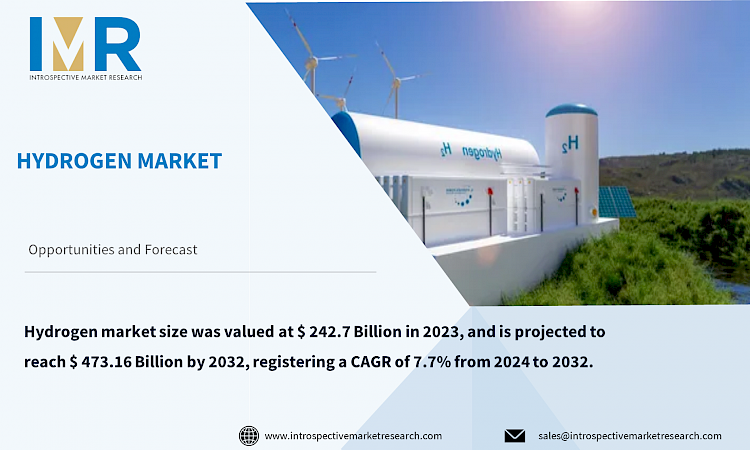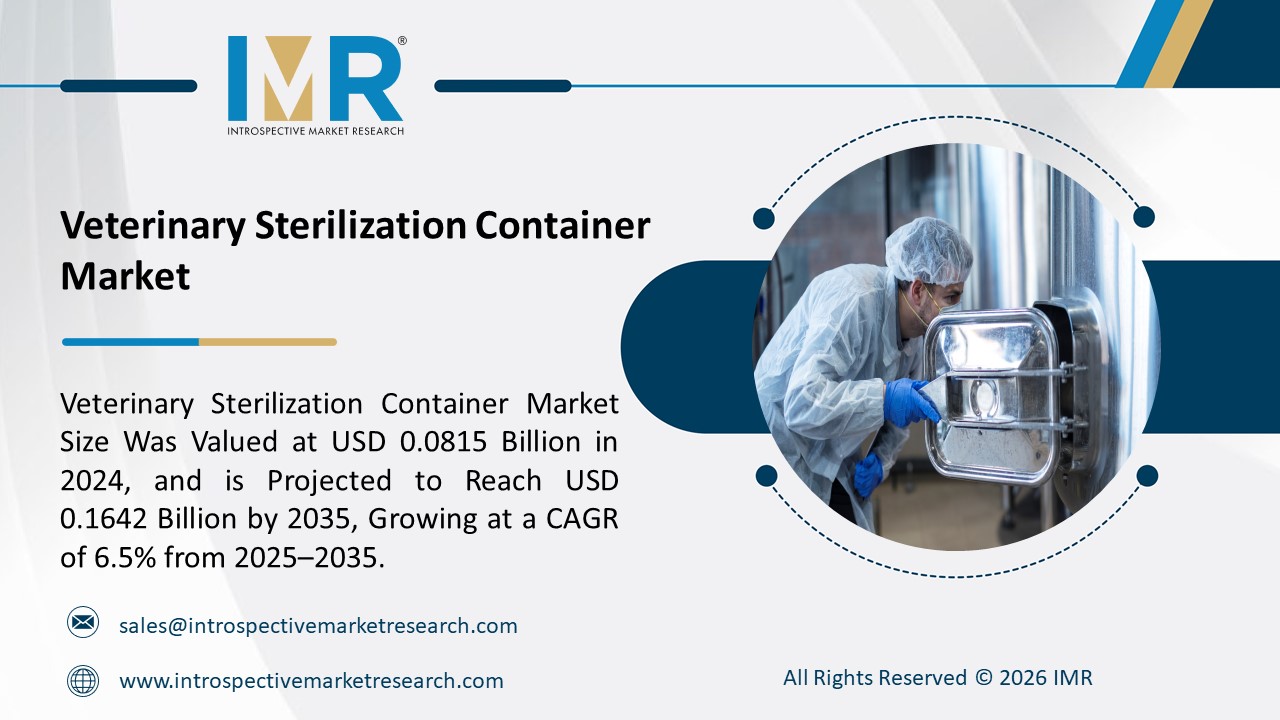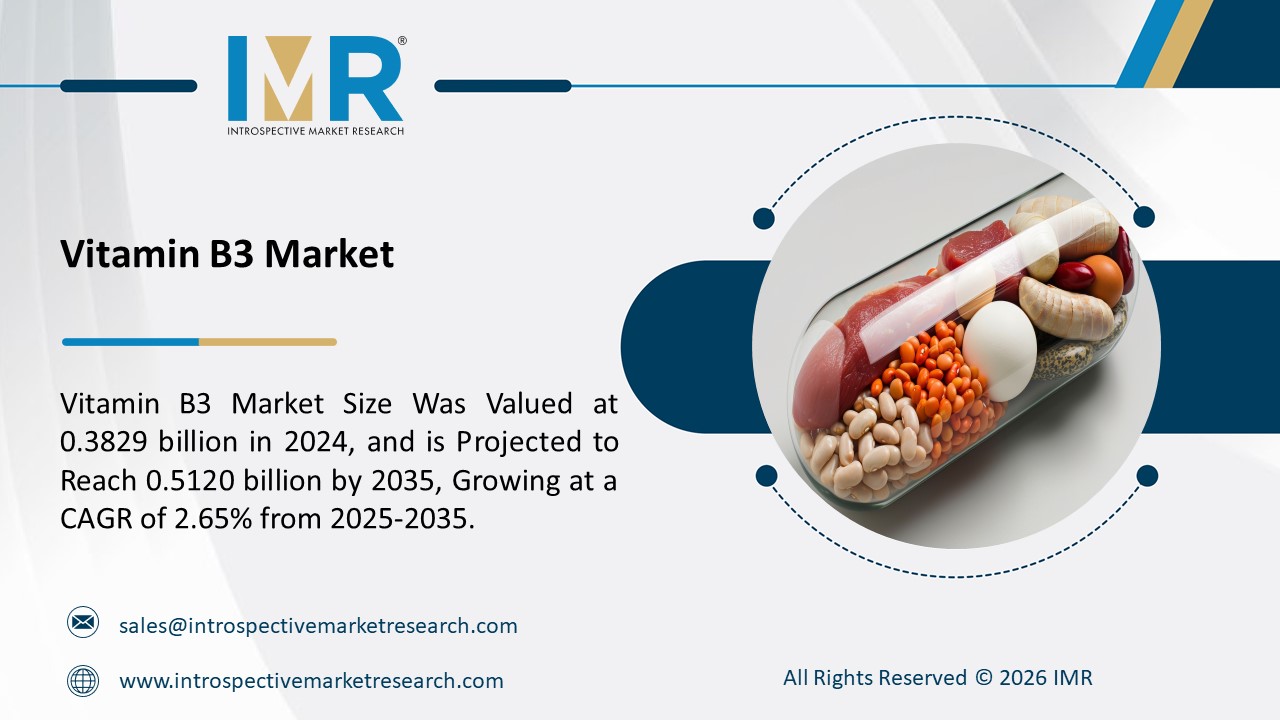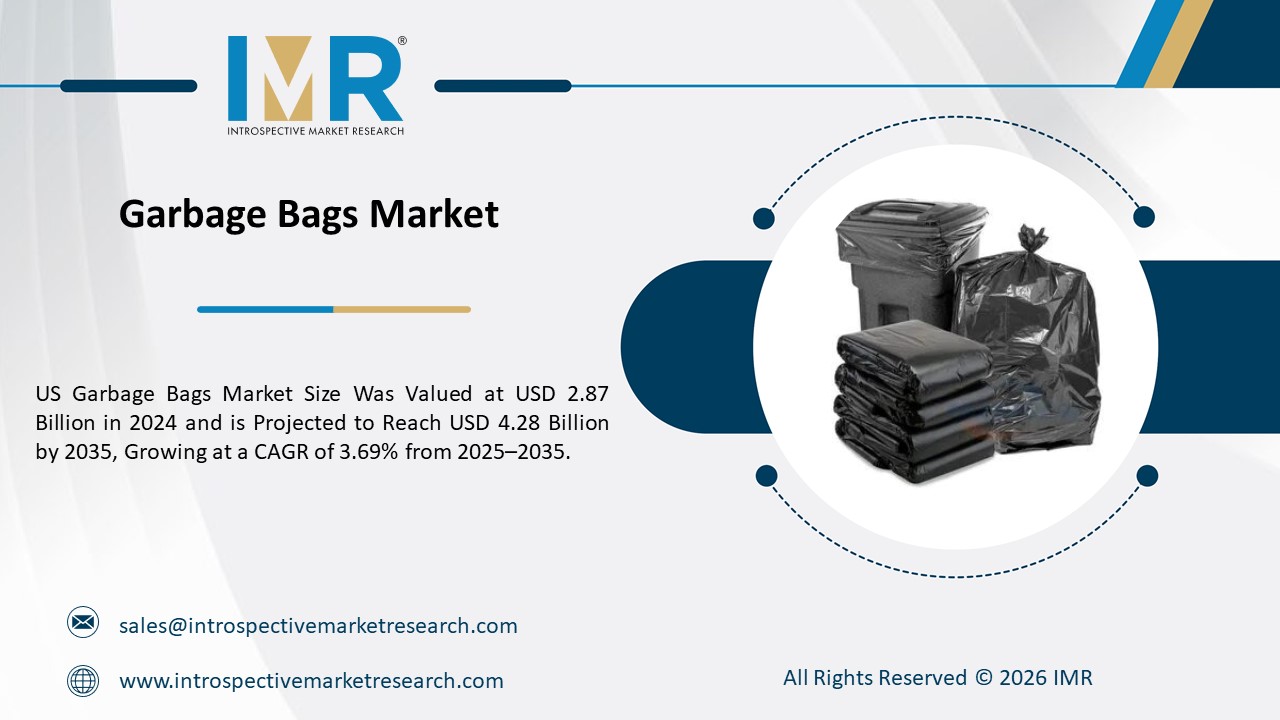
Hydrogen Market Overview
According to a new report published by Introspective Market Research, titled, ?Hydrogen Market by Type, Production Source, Application, and Mode of Delivery: Global Opportunity Analysis and Industry Forecast, 2024?2032,?
The global Hydrogen market size was valued at $ 242.7 Billion in 2023, and is projected to reach $ 473.16 Billion by 2032, registering a CAGR of 7.7% from 2024 to 2032.
Hydrogen is used extensively in the chemical and oil and gas industries. Hydrogen extracted from diverse methods is divided into three types: blue hydrogen, grey hydrogen, and green hydrogen. Grey hydrogen is hydrogen produced from fossil fuels without carbon capture and storage. Furthermore, this sort of hydrogen emits carbon dioxide into the environment as a by-product. The industry is seeing a significant increase in the development of environmentally friendly industrial technologies such as photobiological processes and photobioreactors.
The adoption of hydrogen as a substitute for conventional fuels will have lucrative prospects thanks to the ongoing energy transition and active programs that place a strong emphasis on energy-efficient fuels. Globally, both developed and developing economies are stepping up their efforts to promote the use of renewable energy alternatives and quicken climate change activities.
Greenhouse gases can absorb and re-radiate infrared radiation (net heat energy) from the earth's surface, hence enhancing the greenhouse effect. The usage of fossil fuels and industrialization are the primary reasons of rising global greenhouse gas emissions. The US Environmental Protection Agency (EPA) and National Highway Traffic Safety Administration (NHTSA) have reduced GHG emissions and Corporate Average Fuel Economy (CAFE) standards for US cars from 2021 to 2026 as part of the Safer Affordable Fuel-Efficient (SAFE) Vehicles Rule.
The expansion of the hydrogen economy necessitates the construction of hydrogen infrastructure such as filling stations, pipelines, and distribution networks. FCVs have many advantages, including zero tailpipe emissions, long driving ranges, quick recharging, great efficiency, and silent operation. These advantages lead to a cleaner and more sustainable transportation industry, which raises demand for hydrogen fuel.
Global Hydrogen Market, Segmentation
The Hydrogen market is segmented on the basis of Type, Production Source, Application, Mode of Delivery, and region.
Type:
The type segment is further classified into Grey, Blue, Green. Among these, the Green sub-segment accounted for the highest market share in 2023. The green hydrogen segment is predicted to dominate the global hydrogen market, which is now experiencing a move towards sustainability. This kind of hydrogen is created with the help of renewable energy sources, which is in line with the worldwide shift toward a low-carbon economy and the increasing emphasis on clean energy solutions. Green hydrogen is becoming more and more popular due to a number of factors, such as government laws that are supportive of the industry, technological improvements in electrolysis, and corporate sustainability programs. To reduce the world's carbon impact, industry and government leaders are concentrating on hydrogen, an energy source that was previously neglected.
Application:
The application segment is further classified into Refineries, Ammonia, Methanol & Other Chemicals, Metals & Fabrication, Electronic Food & Beverage, Glass & Ceramics, and Others. Among these, the Refineries sub-segment is anticipated to show the fastest growth by 2032. In the expanding hydrogen market, the Refineries segment is the main player. The oil refining sector is strategically moving toward greener and more sustainable techniques, which is driving the increase in demand. Many important refining procedures, including as hydrocracking, hydrotreating, and reforming, need the usage of hydrogen. Sulfur removal from crude oil, the breakdown of heavy hydrocarbons, and the conversion of naphtha into higher-octane gasoline all depend on these processes.
Market Segmentation
By Type
- Grey
- Blue
- Green
By Production Source
- Natural gas
- Coal
- Other hydrocarbons
- Electrolysis & other sources
By Application
- Refineries
- Ammonia
- Methanol & Other Chemicals
- Metals & Fabrication
- Electronic Food & Beverage
- Glass & Ceramics
- Others
By Mode of Delivery
- Merchant
- Captive
Region:
The Hydrogen market in Asia-Pacific is projected to show the fastest growth by 2032. During the course of the forecast period, the Asia Pacific region is expected to become the dominating force in the worldwide hydrogen market. Asia Pacific nations are leading the increase in hydrogen demand due to their quickly changing energy landscape and strong emphasis on sustainable practices. The utilization of hydrogen generation has been driven by the large number of refineries in major nations like China and India. Additionally, governments in a few Asia-Pacific nations, including Australia and Japan, are assessing cleaner and greener methods for the production of hydrogen.
Some of the leading Hydrogen market players are
- Oxygen Service Company, Inc. (OSC) (US)
- Plug Power Inc (US)
- Quantum Fuel Systems LLC (US)
- Teledyne Technologies Incorporated (US)
- Weldship Corporation (US)
- Worthington Industries (US)
- Air Products and Chemicals, Inc. (US)
- BayoTech (US)
- Chart Industries (US)
- Chevron Corporation (US), and Other Active Players.
Key Industry Developments
- In May 2024, Plug Power Inc. (NASDAQ: PLUG), a global leader in comprehensive hydrogen solutions for the green hydrogen economy, announced the signing of a Basic Engineering and Design Package (BEDP) with Allied Green Ammonia (AGA), an Australian company focused on green ammonia production, for a three-gigawatt (GW) electrolyzer plant supplying hydrogen to AGA?s planned ammonia facility proposed for the Northern Territory of Australia.
- In May 2024, Quantum Fuel Systems (Quantum), a fully integrated alternative energy company, launched its next-generation Hydrogen Fuel Storage System at the Advanced Clean Transportation (ACT) Expo, held from May 1-4, 2023. Available for heavy-duty applications, Quantum?s solution was offered in both back-of-cab and frame-rail-mount configurations, capable of holding 54-80 kilograms (kg) of hydrogen.
Key Findings of the Study / Key Industry Developments.
- Green hydrogen is anticipated to dominate the market, driven by sustainability initiatives and technological advancements.
- Hydrogen adoption is bolstered by the global transition towards sustainable energy solutions and efforts to combat climate change.
- Hydrogen fuel cell vehicles (FCVs) offer zero tailpipe emissions and other advantages, contributing to a cleaner and more sustainable transportation industry.





